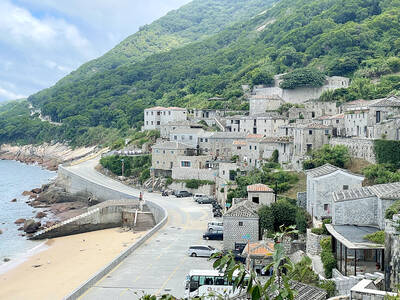The cross-strait Economic Cooperation Framework Agreement (ECFA) has enhanced Taiwan’s opportunity to participate in East Asian economic integration, but did not remove political factors that might hinder the progress, a visiting academic from New Zealand said yesterday.
Answering questions at a forum in Taipei regarding the chances of Taiwan signing a free-trade agreement (FTA) with New Zealand and joining the Trans Pacific Partnership (TPP), New Zealand APEC Study Center director Robert Scollay said that “obviously there are political issues that needed to be resolved.”
Scollay declined to elaborate on the “political connotations” attached to a possible Taiwan-New Zealand FTA, as well as Taiwan’s participation in the TPP and an initiative to create a proposed free-trade area of the Asia-Pacific, because he said he is not a political expert, but said that the political factors involved were not non-issues.
In his presentation delivered at the symposium hosted by the National Policy Foundation of the Chinese Nationalist Party (KMT) that addressed the implications of the ECFA on economic integration in the Asia-Pacific region, Scollay said the ECFA has affected some regional economies.
The ECFA has prompted South Korea to re-evaluate its approach to economic integration with China and Japan, and to consider moving ahead with negotiating a bilateral FTA with China rather than waiting for the slower development of a trilateral FTA among the three economies, Scollay said.
China, South Korea and Japan have been unable to agree on the basis for a trilateral FTA, but the move by South Korea would in turn prompt Japan to re-evaluate its approach, he added.
The opportunity that the ECFA creates for Taiwan to develop FTAs with a range of countries has been touted by officials, but except for an immediate response from Singapore, Taiwan’s initiative to have FTAs with other partners is “seemingly likely to materialize rather more slowly,” he said.
Despite the slow progress, Taiwan should be able to become more closely integrated with the Asia-Pacific region through gradually developing its own FTAs in the region, as well as through closer and more balanced integration with China, Scollay said.
Regarding the chance of an FTA between Australia and Taiwan, Ken Waller, director of the Australian APEC Study Center at RMIT University, said there was much that could be done to enhance bilateral trade and investment without an FTA and suggested Taiwan review its domestic policies.
“Unilaterally, I have no doubt that [when] the door is open, you don’t need an FTA to do that. That doesn’t mean you should not have an FTA, but you don’t need one and you can benefit anyway,” Waller said.
Waller said Australia and Taiwan could proceed to expand their trade and investment relationship in a highly satisfactory and rewarding way in the absence of formal agreements.
Taiwan and Australia should continue to deepen their relationships within APEC and use that as a means of influencing reforms across the region to enhance growth and opportunities in member economies, he added.

The Chinese military has built landing bridge ships designed to expand its amphibious options for a potential assault on Taiwan, but their combat effectiveness is limited due to their high vulnerability, a defense expert said in an analysis published on Monday. Shen Ming-shih (沈明室), a research fellow at the Institute for National Defense and Security Research, said that the deployment of such vessels as part of the Chinese People’s Liberation Army (PLA) Navy’s East Sea Fleet signals a strong focus on Taiwan. However, the ships are highly vulnerable to precision strikes, which means they could be destroyed before they achieve their intended

The first two F-16V Bock 70 jets purchased from the US are expected to arrive in Taiwan around Double Ten National Day, which is on Oct. 10, a military source said yesterday. Of the 66 F-16V Block 70 jets purchased from the US, the first completed production in March, the source said, adding that since then three jets have been produced per month. Although there were reports of engine defects, the issue has been resolved, they said. After the jets arrive in Taiwan, they must first pass testing by the air force before they would officially become Taiwan’s property, they said. The air force

GLOBAL: Although Matsu has limited capacity for large numbers of domestic tourists, it would be a great high-end destination for international travelers, an official said Lienchiang County’s (Matsu) unique landscape and Cold War history give it great potential to be marketed as a destination for international travelers, Tourism Administration Director General Chen Yu-hsiu (陳玉秀) said at the weekend. Tourism officials traveled to the outlying island for the Matsu Biennial, an art festival that started on Friday to celebrate Matsu’s culture, history and landscape. Travelers to Matsu, which lies about 190km northwest of Taipei, must fly or take the state-run New Taima passenger ship. However, flights are often canceled during fog season from April to June. Chen spoke about her vision to promote Matsu as a tourist attraction in

PAWSITIVE IMPACT: A shop owner said that while he adopted cats to take care of rodents, they have also attracted younger visitors who also buy his dried goods In Taipei’s Dadaocheng (大稻埕), cats lounging in shops along Dihua Street do more than nap amid the scent of dried seafood. Many have become beloved fixtures who double as photography models, attracting visitors and helping boost sales in one of the capital’s most historic quarters. A recent photo contest featuring more than a dozen shop cats drew more than 2,200 submissions, turning everyday cat-spotting into a friendly competition that attracted amateur and professional photographers. “It’s rare to see cats standing, so when it suddenly did, it felt like a lucky cat,” said Sabrina Hsu (徐淳蔚), who won the NT$10,000 top prize in